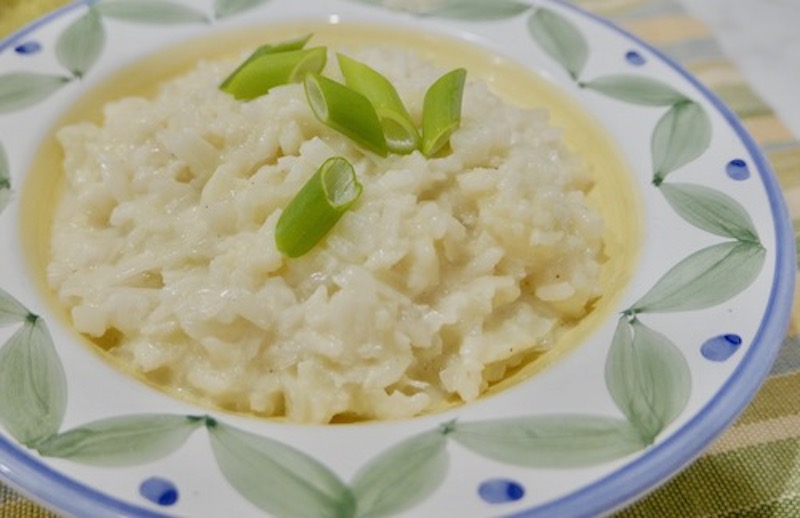Cauliflower Risotto
Servings
2Serving size
about 1 1/2 cupsThis recipe can easily be multiplied and makes good leftovers.

Ingredients
| 1 tsp. Olive oil |
| 1 medium White or yellow onions (finely diced) |
| 1/2 cup Arborio rice |
| 3 1/2 cup Water |
| 1/8 tsp. Salt |
| 8 ounces Cauliflower, raw (cut into 1/2 inch florets)) |
| 2 ounce Semisoft goat cheese |
| 2 ounce Cheese, provolone, reduced fat (grated) |
| 1 to taste Black pepper |
Instructions
Add the onion and cook, stirring frequently, for about 3 minutes or until the onion is translucent.
Add the water, rice, salt, and cauliflower, stir, and simmer, stirring occasionally, for 25-30 minutes or until the rice is al dente.
Reduce the heat to low and add the cheeses, stirring gently until the cheeses are melted.
Add black pepper to taste.
Serve.

Would you like to print or download the document?
Special Diet Information
Click on the icon for information.










Lactose
This recipe contains cheese and some of those who are lactose intolerant may be able to tolerate it.Recipe Notes
Over the last few years I have been ordering cauliflower risotto at a few different restaurants. The name alone sounds great – creamy cauliflower and rice with the likelihood of cheese to round it out. Interestingly, they have been widely different.
One didn’t contain rice at all, just cauliflower and cheese, but the texture was a lot like risotto. One had roasted cauliflower with the rice with a nice savory flavor. All of them have been good, but I have been thinking about what I would really like and that is a super simple dish where all the ingredients blend well but are not overpowering.
This recipe does just that, and while it is a bit white, the flavor of the onion, the rice, the cauliflower, and the cheese come through clearly and each balances the other well. Cutting the cauliflower into 1/2 inch flowerets means that as the dish cooks they break down a bit and end up almost the same size as the rice. You could roast the cauliflower before making the risotto, but the flowerets should be a bit larger and you should add them later in the cooking – about halfway through.



